Hong Kong’s Sing Yin Secondary School ranks among the most-awarded green schools in the world. what makes his school a model of indoor air quality (IAQ) and Green Building best practices.
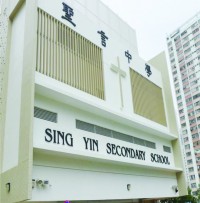 The school has since received a number of green awards, and all of them recognise its achievements in local green building design and indoor air quality (IAQ).
The school has since received a number of green awards, and all of them recognise its achievements in local green building design and indoor air quality (IAQ).
The awards include:
In 2013, the school was one of the two recipients of the US Green Building Council’s ‘Greenest School on Earth’ award. We at Sing Yin Secondary School consider it a great honour to receive the prestigious international award, which recognises schools that utilise resources wisely, provide a healthy green learning environment and emphasise sustainability and conservation education. It must be noted that Sing Yin is the first-ever campus built in a high-density urban area to win the USGBC award.
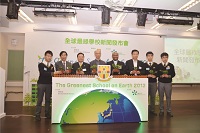 We are delighted that Sing Yin’s hard work and efforts on environmental education have been well-recognised. The school aims to provide one of the best educations in the world with a global perspective for boys in the local community. The school puts a heavy emphasis on developing students’ environmental knowledge, attitude and habits that protect the environment. It adopts an interdisciplinary approach to realise its aim for environmental education. Through the green features in the campus and different activities organised by the school, it is hoped that the importance of environmental conservation is not only spread to the teachers and the students but also to their families and the general public.
We are delighted that Sing Yin’s hard work and efforts on environmental education have been well-recognised. The school aims to provide one of the best educations in the world with a global perspective for boys in the local community. The school puts a heavy emphasis on developing students’ environmental knowledge, attitude and habits that protect the environment. It adopts an interdisciplinary approach to realise its aim for environmental education. Through the green features in the campus and different activities organised by the school, it is hoped that the importance of environmental conservation is not only spread to the teachers and the students but also to their families and the general public.
The Energy Efficiency System of Sing Yin comprises four major parts. The first part is the Renewable Energy System. The school is equipped with monocrystalline solar panels (including sun-tracking PV panels, with 134 pieces of PV panels fixed at 22 degrees to the horizon on the rooftop – to maximise annual electricity production – and 218 square metres of fixed monocrystalline solar panels, fitted outside the windows of classrooms), 188 square metres of thin film solar cells in transparent type on classroom windows, a hybrid-type solar energy collector for water heating and a small-scale vertical wind turbine.
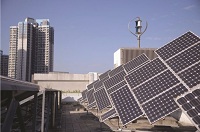 The second part is the Sustainable High Energy-Saving Design System. It includes a centralised water-cooled air conditioning system, which is highly energy-efficient and enables energy savings of up to 35% when compared to conventional air-cooled air conditioning systems. There are LED exit signs and LED lighting in the classrooms on the fifth floor and the school hall, while T5 fluorescent lights are used in other rooms to conserve energy. There are also two sun tubes on the rooftop to lead sunlight to the Physics Laboratory by optical fibre, for illumination. Moreover, the elevator in the school is designed with an energy-regeneration system, which recovers gravitational potential energy as electrical energy when the elevator goes down.
The second part is the Sustainable High Energy-Saving Design System. It includes a centralised water-cooled air conditioning system, which is highly energy-efficient and enables energy savings of up to 35% when compared to conventional air-cooled air conditioning systems. There are LED exit signs and LED lighting in the classrooms on the fifth floor and the school hall, while T5 fluorescent lights are used in other rooms to conserve energy. There are also two sun tubes on the rooftop to lead sunlight to the Physics Laboratory by optical fibre, for illumination. Moreover, the elevator in the school is designed with an energy-regeneration system, which recovers gravitational potential energy as electrical energy when the elevator goes down.
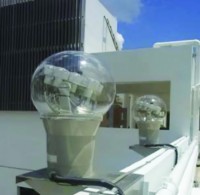 The third part of the Energy Efficiency System is the Building Energy Management System. It is installed to ensure the efficient use of energy, with motion sensors that automatically turn off the lights and air conditioning if there is no one in the room. There are also photo sensors that dim the lights if there is enough sunlight to illuminate the room. This Energy Management System maintains a better monitoring of almost all energy generating and saving devices in the school.
The third part of the Energy Efficiency System is the Building Energy Management System. It is installed to ensure the efficient use of energy, with motion sensors that automatically turn off the lights and air conditioning if there is no one in the room. There are also photo sensors that dim the lights if there is enough sunlight to illuminate the room. This Energy Management System maintains a better monitoring of almost all energy generating and saving devices in the school.
The fourth part is the Environmental Features related to thermal comfort in the school. There are some features and designs to improve the ventilation and to lower the air temperature in the school environment in the hot season, so as to lower the use of air conditioners. The school building faces east, which is the direction of the prevailing winds in Hong Kong, and wide breezy corridors with large open spaces can easily be found in the campus. There is also an atrium that improves the overall ventilation, while the glass canopy allows sunlight to reach the covered playground. Two green roofs, together with solar-shading devices outside the classrooms and thermal insulating coating on windows in the school office are all measures to lower the energy used for cooling. Besides, there are windows with low ‘E’ glass on double glazing to reduce noise and minimise heat radiation.
An automatic weather station is also mounted on the roof of the school building. The air-conditioners of the classrooms can only be switched on by the students when the heat index is above 25.5 degrees C (real-time data taken from the weather station). A pre- and post-study revealed that this practice has saved about 40,000 kWh of electrical energy per year, roughly six per cent of the annual power consumption.
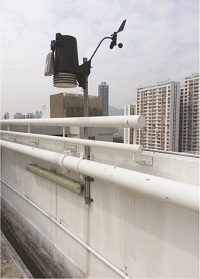 A healthy school environment also includes better air quality, both indoor and outdoor. There are a lot of plants grown in the school campus, with a lush vertical green wall and a bamboo garden. Bamboo is planted because it minimises carbon dioxide and generates up to 35% more oxygen than equivalent stands of trees. One hectare of bamboo sequesters 62 tonnes of CO2 per year, while one hectare of young forest only sequesters 15 tonnes of CO2 per year.
A healthy school environment also includes better air quality, both indoor and outdoor. There are a lot of plants grown in the school campus, with a lush vertical green wall and a bamboo garden. Bamboo is planted because it minimises carbon dioxide and generates up to 35% more oxygen than equivalent stands of trees. One hectare of bamboo sequesters 62 tonnes of CO2 per year, while one hectare of young forest only sequesters 15 tonnes of CO2 per year.
Carbon dioxide sensors are installed in the classrooms to ensure sufficient fresh air supply. When the concentration of CO2 in a classroom exceeds the standard, the fresh air exchange and pre-coolers will be turned on automatically. There are also air purifiers in the school campus and titanium oxide coating in staff lavatories to ensure excellent indoor air quality.
[div class=”row”]
[div class=”col-md-10 col-md-offset-1 content-sidebox”]
In a press communiqué announcing the two winners (Sing Yin Secondary School in Hong Kong, China, and the Uaso Nyiro Primary School in Laikipia, Kenya) of the 2013 Greenest School on Earth award, Rick Fedrizzi, USGBC President, CEO and Founding Chair, was quoted as saying, “We selected both of these schools because of what they say about one another and also about the scale and scope in the movement – they demonstrate that across the world, from community to community and from city to village, no matter where we learn, where we learn matters.”
[end-div]
[end-div]
(As told to Fatima de la Cerna, Assistant Editor, Climate Control Middle East)
Copyright © 2006-2025 - CPI Industry. All rights reserved.